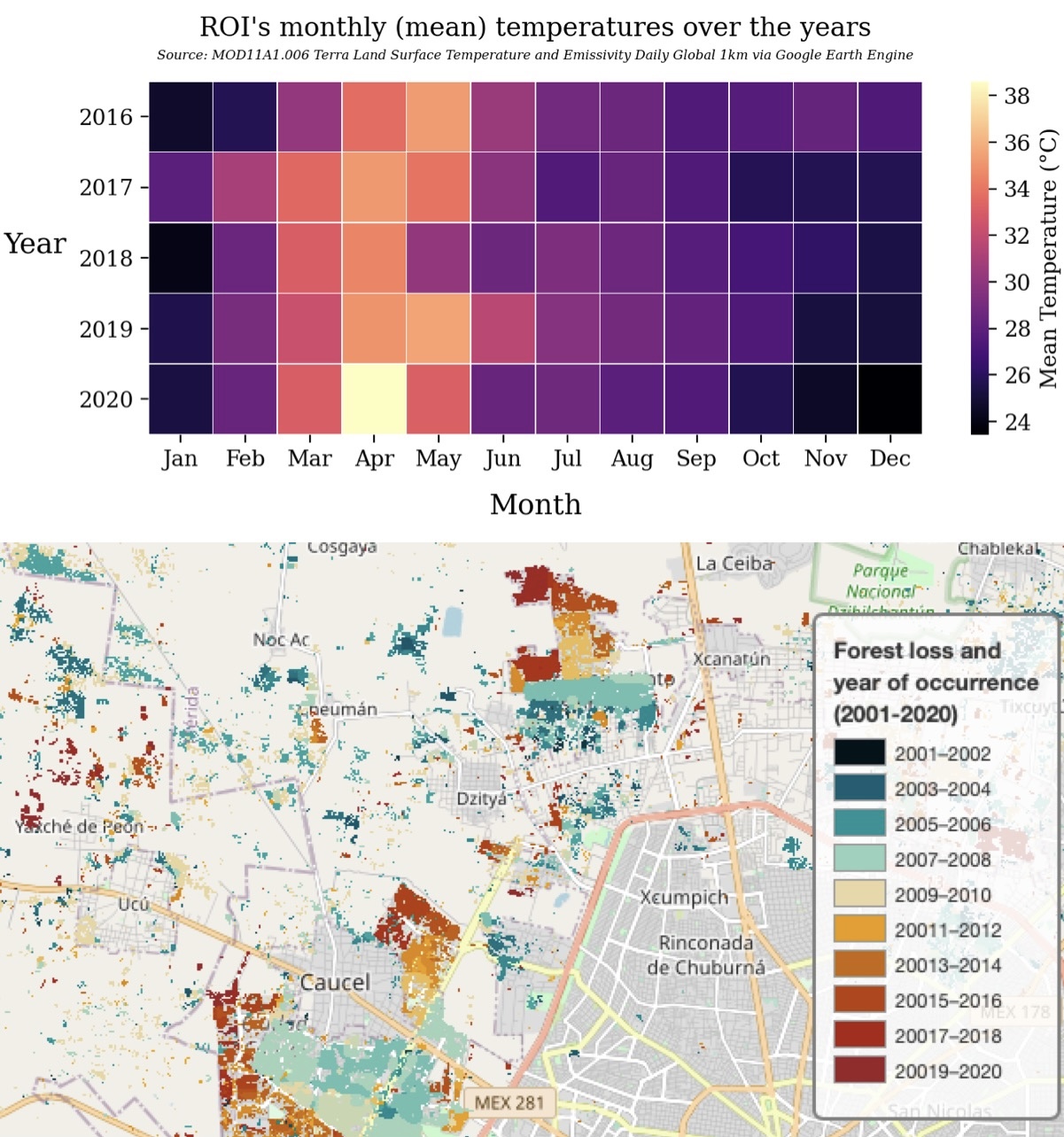9th International Fire Ecology and Management Congress: Google Earth Engine: Data and Information from the Cloud to your House
Authors: Isaac Arroyo-Velázquez , Enrique Camacho-Pérez
Universidad Autónoma de Yucatán
Tecnológico Nacional de México Campus Progreso
This repository aims to complement the poster shared at the 9th International Fire Ecology and Management Congress, hosted virtually from November 30 to December 3.
Here you can find related topics related to Google Earth Engine (GEE), for example:
- A script with a step-by-step guide on using, extracting, manipulating and visualizing data from the GEE's JavaScript API 🛰 (the script in the Code Editor is here) 🌎
- A Jupyter Notebook, with a step-by-step guide on using and extracting data from the GEE's Python API and manipulating and visualizing them with the most common Data Science/Analysis Python libraries 💻
Some of the results are inside the maps and images folders.

In order to execute the script and the Jupyter Notebook successfully is fundamental to be registered to the Google Earth Engine platform. Here are some guides that could help ease this procedure 👓 :
- Sign Up to the platform ✏️
- Earth Engine Code Editor (JavaScript) 🌍
- Python Installation (Python) 🐍
The Python environment has the following libraries and versions:
- Python: 3.8.10
- JupyterLab (
jupyterlab): 3.0.16 - GEE API (
earthengine-api): 0.1.272 - NumPy (
numpy): 1.20.2 - Pandas (
pandas): 1.2.5 - Folium (
folium): 0.12.0 - Matplotlib (
matplotlib): 3.3.4 - Seaborn (
seaborn): 0.11.1 - eemont (
eemont): 0.2.5 - geemap (
geemap): 0.8.18